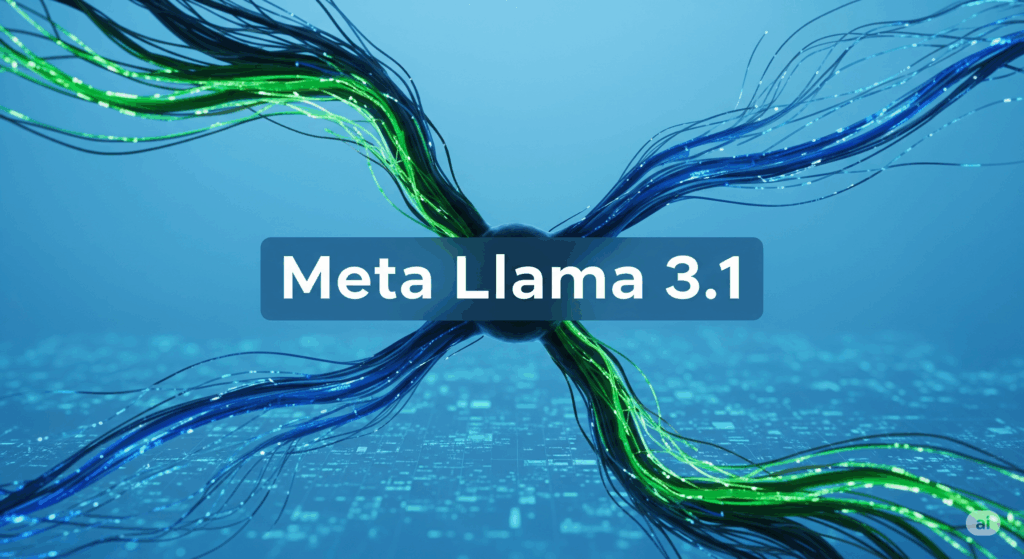The world of Artificial Intelligence is buzzing, constantly pushing boundaries and redefining what’s possible. But with great power comes great responsibility, and a recent study has cast a fascinating, albeit concerning, spotlight on one of the latest giants: Meta’s Llama 3.1. It turns out, this cutting-edge AI model has “memorized” a significant chunk – a staggering 42 percent – of the beloved Harry Potter series.
This isn’t just a fun fact for Potterheads; it’s a profound development with significant implications for copyright, AI development, and even how we perceive the very nature of machine learning. As we unpack this revelation and look at 13 new AI updates you can’t miss, let’s understand why Llama 3.1’s magical memory is more than just a parlour trick.
The Elephant in the AI Room: What Does “Memorized” Really Mean?
When we say Llama 3.1 “memorized” 42 percent of a Harry Potter book, it’s not like the AI curled up with a copy and actively committed it to memory. Instead, it speaks to how Large Language Models (LLMs) are trained. LLMs learn from vast datasets of text, identifying patterns, relationships, and even verbatim sequences. The study, conducted by researchers from Stanford, Cornell, and West Virginia University, found that Llama 3.1’s 70-billion parameter model could reproduce 50-token excerpts from Harry Potter and the Philosopher’s Stone with a greater than 50% probability. This means the model essentially has strong “recall” of these specific passages.
This finding is particularly noteworthy because it challenges previous assertions by some AI companies that such memorization is a “fringe phenomenon.” The sheer volume of memorized text suggests a deep embedding of the copyrighted material within the model’s structure, rather than just superficial exposure. It also highlights a striking difference in memorization rates between models; earlier versions like Llama 1 only retained around 4.4% of the same book.
Why This Matters: Copyright, Creativity, and the Future of AI
The immediate and most pressing concern stemming from this discovery is the issue of copyright infringement. AI models are trained on massive datasets, often scraped from the internet, which inevitably include copyrighted works. When an AI can reproduce substantial portions of copyrighted material verbatim, it raises serious legal questions. Authors and publishers are already pursuing lawsuits against AI companies, arguing that their intellectual property is being used without permission or compensation.
This isn’t just about legal battles; it touches upon the very essence of human creativity and its value in the age of AI. If AI models can essentially replicate existing works, where does the line between inspiration and infringement lie? This study adds significant weight to the argument that AI training on copyrighted material may not always fall under “fair use,” especially when the model can directly generate outputs that substitute for the original works.
Beyond legal ramifications, this memorization phenomenon brings up crucial discussions about AI ethics and transparency in AI. How much of an AI’s output is truly novel generation versus a sophisticated regurgitation of its training data? For developers, understanding these memorization patterns is vital for building more robust, ethical, and legally sound AI systems. It also emphasizes the need for responsible data curation and the development of mitigation techniques to prevent undesirable memorization.
Navigating the AI Landscape: 13 New Updates You Can’t Miss
While the Llama 3.1 news gives us pause for thought, the AI landscape continues its rapid evolution. Here are some other exciting and impactful developments you should be aware of:
- Google’s AI Mode in India: Google has launched an experimental “AI Mode” in India, powered by a custom version of Gemini 2.5. This feature is designed to handle more complex and nuanced search queries, offering multimodal capabilities (text, voice, image input) and deeper exploration of information. This signifies a push towards more conversational and comprehensive search experiences.
- Continued Advancements in Multimodal AI: The trend towards multimodal AI, where models can process and understand various forms of data like text, images, and audio, is accelerating. Many new models are being developed with enhanced capabilities in this area, promising more intuitive and powerful AI interactions.
- Focus on AI Efficiency and Scalability: As AI models grow larger, the computational resources required for training and deployment become significant. New updates are consistently focusing on making AI more efficient and scalable, allowing for wider adoption and more practical applications across industries.
- Open-Source AI Momentum: While Meta faces challenges with Llama 3.1’s memorization, its commitment to open-source AI continues to empower developers and foster innovation. The availability of powerful open-weight models allows for greater transparency and community-driven improvements.
- Ethical AI Frameworks and Regulations: The discussions around AI ethics and legal implications are pushing for the development of more robust regulatory frameworks. Governments and organizations are actively exploring how to govern AI responsibly, particularly concerning data privacy, copyright, and bias.
- AI in Healthcare: We’re seeing continued advancements in AI’s application in healthcare, from assisting with medical diagnoses and analyzing patient data to streamlining administrative tasks.
- Enhanced AI for Developers: New tools and platforms are making it easier for developers to build and deploy AI applications, lowering the barrier to entry and fostering a more vibrant AI ecosystem.
- AI-Powered Content Generation: Beyond general language models, specialized AI tools for generating specific types of content (e.g., marketing copy, code, summaries) are becoming more sophisticated and widely available.
- Real-time AI Applications: The drive towards real-time AI processing is opening doors for applications in areas like autonomous systems, interactive virtual assistants, and dynamic decision-making.
- AI in Enterprise Solutions: Businesses are increasingly integrating AI into their operations for automation, business intelligence, and customer engagement, leading to significant efficiency gains.
- AI for Cybersecurity: AI is being leveraged to enhance cybersecurity measures, from threat detection and anomaly identification to automated response systems.
- Bias Mitigation in AI: Researchers and developers are actively working on techniques to identify and mitigate biases embedded in AI models, aiming for more fair and equitable outcomes.
- Explainable AI (XAI): There’s a growing emphasis on making AI models more transparent and interpretable, allowing users to understand why an AI makes certain decisions or produces specific outputs.
The Road Ahead: Balancing Innovation with Responsibility
The revelation about Llama 3.1 and Harry Potter is a potent reminder that while AI offers immense potential, it also comes with complex challenges. The future of AI innovation hinges on a delicate balance: pushing technological boundaries while simultaneously addressing the ethical, legal, and societal implications.
For us, as users and stakeholders, it’s crucial to remain informed and engaged. Understanding how AI models are trained, what their limitations are, and the discussions surrounding their impact is essential. This new study is a call to action for greater transparency in AI development, more rigorous data governance, and a proactive approach to shaping a future where AI truly serves humanity responsibly and ethically. The magic of AI is undeniable, but ensuring it’s a force for good means facing its challenges head-on, just as any good wizard would.







